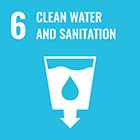Sustainability 101
Time required: 60-70 minutes
This online module was developed by UNB Sustainability and the Office of Experiential Education in collaboration with campus partners to introduce key topics in Sustainability.
Prefer text?
Read the transcript
This online module was developed by UNB Sustainability and the Office of Experiential Education, in collaboration with campus partners, to introduce key topics in Sustainability.
To begin, let’s take a look at what sustainability is.
Sustainability can be defined in many ways, but is, in general, development that meets today’s needs without compromising the needs of the future. This requires natural, social, and economic resources – meaning that sustainability is about more than just the environment!
Sustainability is usually described as being made up of three different areas or types of sustainability:
1) Economic sustainability
The goal of economic sustainability is to maintain intact global communities and ensure that everyone has access to secure sources of livelihood.
2) Social sustainability
The goal of social sustainability is to protect the basic requirements needed to keep individuals and communities healthy, secure, and respected and ensure that they are available and accessible to all.
3) Environmental sustainability
The goal of environmental sustainability is to conserve natural resources and protect global ecosystems to support health and wellbeing, now and in the future. The concept of stewardship, in which humans must act as stewards of the earth, is deeply intertwined with environmental sustainability.
It is important to note that there are alternative lenses and perspectives that can be taken. In the words of Robin Wall Kimmerer, an Anishinabekwe scientist,
“The traditional ecological knowledge of indigenous harvesters is rich in prescriptions for sustainability. They are found in Native science and philosophy, in lifeways and practices, but most of all in stories…
The details are highly specific to different cultures and ecosystems, but the fundamental principles are nearly universal among people who live close to the land.”
In this module, we will look at some of the issues and topics in sustainability, such as climate change, obstacles to sustainability action, and the United Nations Sustainable Development Goals or SDGs. You will consider some of the possible actions you can take to promote sustainability and those being taken by the University of New Brunswick.
Let’s get started!
Interested in more from Robin Wall Kimmerer? Read her book, Braiding Sweetgrass
Introduction to the climate change crisis
Prefer text?
Read the transcript
Climate change is the long-term change in the average weather patterns that have come to define Earth’s local, regional, and global climates. Its effects include droughts, flooding, rising sea levels, melting polar ice and glaciers, and increased severity and frequency of storms and wildfires.
Collectively, these changes have already begun to affect human health, our ability to grow food, and our safety and security. Biodiversity has also been decreasing as habitats change and dangerous conditions put wildlife at risk.
Action to slow and reduce the effects of climate change is possible, however. In general, climate change action can broadly be divided into two areas:
Adaptation
Mitigation
Adaptation is the process of making something suitable for a new use or purpose. In the context of climate change, adaptation includes all actions that will help human societies, Earth’s natural processes and ecosystems, and plant and wildlife survive in a changing world. This can include developing new agricultural crops that can withstand higher temperatures or use less water or designing new irrigation processes that remove less water from freshwater ecosystems.
Mitigation is the act of reducing the severity, seriousness, or painfulness of something. In the context of climate change, mitigation includes the actions being taken to try to limit or avoid the worst effects of climate change. These can include implementing carbon taxes, the development of carbon capture technology, and policies limiting the production of carbon dioxide and methane.
You will learn more about climate change and strategies in adaptation and mitigation in future modules.
Key definitions
Sustainability: Development that meets today’s needs without compromising future needs.
Environmental sustainability: Development that conserves natural resources and protects global ecosystems to support health and wellbeing, now and in the future.
Economic sustainability: Development that makes secure sources of livelihood available to everyone and ensures that global communities remain intact.
Social sustainability: Development that ensures basic requirements to keep individuals and communities healthy, secure, and respected are in place.
Adaptation: The process of making something suitable for a new use or purpose.
Mitigation: The act of reducing the severity, seriousness, or painfulness of something.
Climate change: A long-term change in the average weather patterns that have come to define Earth’s local, regional, and global climates.
United Nations Sustainable Development Goals (SDGs)
After decades of work by several nations, United Nations (UN) departments, and conferences, the United Nations Sustainable Development Goals, or SDGs, were created. All countries are encouraged to embrace the 2030 Agenda for Sustainable Development, which 193 UN Member States adopted in 2015. The 17 SDGs are designed for all nations and are supposed to be a call to action.
The goal of the SDGs is to promote “peace and prosperity for people and the planet, now and into the future.”
Video produced by the United Nations
The SDGs focus on all three types of sustainability that we have discussed. For example:
-
SDGs 1 (No poverty) and 8 (Decent work and economic growth) directly support economic sustainability.
-
SDGs 3 (Good health and well-being) and 5 (Gender equality) directly support social sustainability.
-
SDGs 14 (Life below water) and 15 (Life on land) directly support environmental sustainability.
-
Some SDGs, such as 9 (Industry, innovation, and infrastructure) and 13 (Climate action) support multiple types of sustainability, as they affect many aspects of human society and global systems.
-
SDG 2 (Zero hunger) contains targets from all three Sustainability pillars. Social sustainability is supported through the reduction of malnutrition, economic sustainability is supported through improvements in agricultural trade, and environmental sustainability is supported by increases in climate resilience.
UN SDGs
Learn more about what you can do to support each SDG and about what UNB is doing right now.
1: No poverty
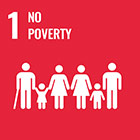
What can I do?
- Donate what you don't use
- Support local banks, such as Greener Village and the Saint John Community Food Basket
What is UNB doing?
- Provides student support through the Financial Aid Office
- Provides community support through Residence charities
2: Zero hunger
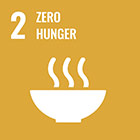
What can I do?
- Waste less food
- Support local farmers
What is UNB doing?
- Fresh food bags
- Community garden
- Free food vegetable planters
3: Good health and well-being
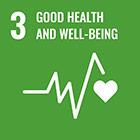
What can I do?
- Vaccinate your family
- Place yourself on the organ and tissue donors’ registry in your country
What is UNB doing?
- Launched the Integrated Health Initiative
4: Quality education
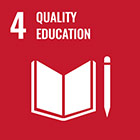
What can I do?
- Help educate the children in your community
- Volunteer with Promise Partnership
What is UNB doing?
- Faculty of Education
- Promise Partnership
- Opportunities from the Office of Experiential Education
5: Gender equality
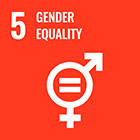
What can I do?
- Empower women and girls
- Support and ensure equal rights
What is UNB doing?
- Support female-led organizations on both campuses
- Muriel McQueen Fergusson Centre
6: Clean water and sanitation
7: Affordable and clean energy
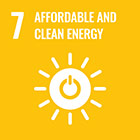
What can I do?
- Use energy efficient appliances and lights
- Turn off lights and unplug electronics when not in use
What is UNB doing?
- Initiated the Energy Management Program
8: Decent work and economic growth
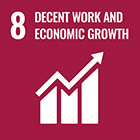
What can I do?
- Create or support job opportunities for youth
What is UNB doing?
9: Industry, innovation and infrastructure
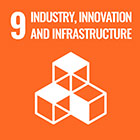
What can I do?
- Fund projects that provide basic infrastructure
What is UNB doing?
10: Reduced inequalities
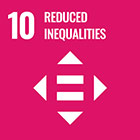
What can I do?
- Support the marginalized and disadvantaged
- Learn more about EDI (equity, diversity & inclusion) with the EDI+ modules
What is UNB doing?
11: Sustainable cities and communities
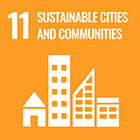
What can I do?
- Bike, walk, or use public transit
- Support investment in public transit
What is UNB doing?
- Experiential courses, including Unhealthy Cities (POLS 4632)
12: Responsible consumption and production
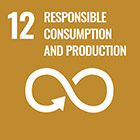
What can I do?
- Recycle paper, plastic, glass, and aluminum
What is UNB doing?
13: Climate action
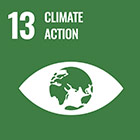
What can I do?
- Take action on climate change
What is UNB doing?
14: Life below water
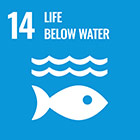
What can I do?
- Avoid eating unsustainable fish and seafood
- Avoid plastic bags
What is UNB doing?
- UNB Saint John Marine Block and Marine Semester
15: Life on land
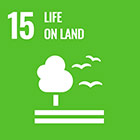
What can I do?
- Plant a tree
- Support or volunteer for local environmental groups
What is UNB doing?
- UNB-wide goal: Plant ten new trees every year
16: Peace, justice and strong institutions
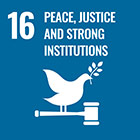
What can I do?
- Stand up for human rights
What is UNB doing?
- Working towards a Truth and Reconciliation Action Plan
- Mi'kmaq-Wolastoqey Centre
17: Partnerships for the goals
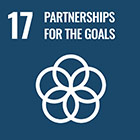
What can I do?
- Lobby your government to support sustainable development funding, social support and environmental protections
What is UNB doing?
- Member of local, national and international partnerships
Check your understanding
Circles of influence
Leah Stokes, an environmental activist, wrote about her experiences and describes the concept of circles of influence. Watch the video or read the transcript below to follow her story:
Prefer text?
Read the transcript
(Excerpted from “A Field Guide for Transformation”)
“My first environmental actions […] were small and immediate. When my friends and I found out that tiny milk boxes we got at lunch could not be recycled at school, we stopped playing outside. Instead, we spent our lunch hour meticulously cutting up the cartons so we could lay them flat and bring them home to recycle them. We did this for weeks.
In my teens, my actions got bigger and I started to stretch beyond myself. I wrote to the owners of the local grocery store to ask them to stop selling Chilean sea bass – a vulnerable species. I got my family to stop using disposable plates at family gatherings.
When I went to university, I had my first real chance to learn about the climate crisis. I tried to figure out ways to get more people to change how they used energy. The campaign worked: We helped university residence cut around 10% of their energy use. Before I graduated, I helped build on campus a large solar project, whose profits would fund student scholarships. It was clear to me that changing the energy system was the key to tackling the climate crisis. And I vowed to do everything I could to help drive that transformation.
Yet the results were not satisfying enough. I wanted a bigger scale. I saw that changing behaviours was not as powerful as changing institutions. So, I spent the next decade trying to understand how people have tried to change energy policy to tackle the climate crisis. I tell you these stories to show you how […] I’ve lived my life in widening circles. I’ve tried with each passing year to reach a bit further into the energy system and drive greater changes.
When I come to the end of my life, I want the scales to show that I prevented more carbon emissions than I caused. And there is no way to make that happen if I work only on myself.”
As Stokes describes, there are different circles of influence available to us:
- The personal or immediate (our personal actions and choices)
- Our families and friends
- Our communities (ex. school, university campus, community gardens)
- Systems and institutions (ex. laws, policies)
Each circle has a larger scope and wider effect than the previous. Our actions can be targeted to different circles of influence.
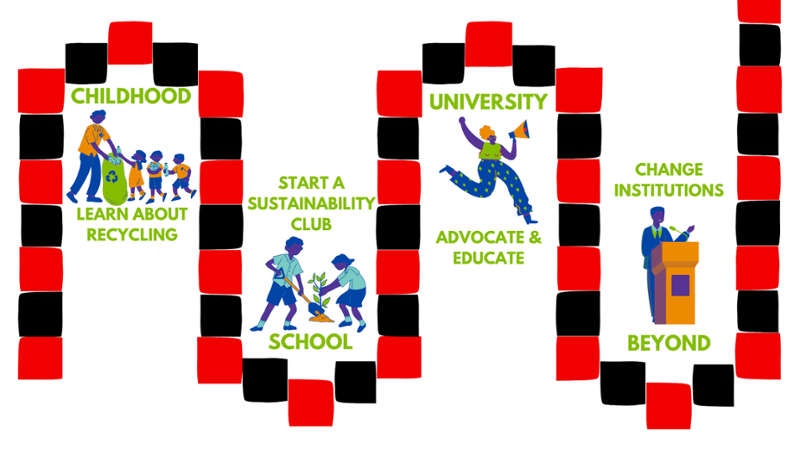
As we grow from children to teenagers to young adults and beyond, our ability to affect change at wider circles generally increases. However, it is important to remember that you can (and should!) take actions within every circle of influence. Some of the loudest voices for policy change come from the youngest members of society and it’s never too late for someone to start making changes to their personal actions.
If you are struggling to speak out, a non-profit organization developed the Inner Development Goals framework, a foundation for reaching the Sustainable Development Goals. These tools could help boost courage and open your heart to achieving the SDGs.
Actions you can take at each circle of influence:
Personal: Reuse, avoid, or decrease food waste, limit air travel, grow a food or wildlife garden, vote with your money (choose products that are more sustainable and avoid those that aren’t), switch to electric heating and appliances.
Family and friends: Encourage others to take personal actions, share knowledge and awareness of sustainability issues.
Community: Participate in a community garden, volunteer with a local environmental or social justice organization, organize a campus sustainability event, spread climate change awareness.
Systems and institutions: Petition for government action and changes to the law, write to your MLA or MP about issues you care about, vote in elections, and boycott companies with unsustainable practices.
Obstacles
There are a number of obstacles that can limit or prevent your ability to take action on sustainability.
One of the most obvious obstacles is socioeconomic status – individuals and families who are living in poverty are significantly more limited in the actions that can take to promote sustainability than those who have larger incomes and more resources available to them.
Socioeconomic differences are one example of how power and privilege play a role in the ability of individuals, groups, and countries to take action on sustainability. You can learn more about these effects in our module on Sustainability and Social Justice.
Watch the video or read the transcript below and then read on to learn more how the scale of sustainability actions can also be an obstacle.
Prefer text?
Read the transcript
When we talk about being sustainable it’s important to ask…
Do your actions matter?
Let’s think about this in terms of coffee.
Research has shown that one cup of coffee – no milk and sugar – results in roughly 0.3kg of CO2 equivalent. This means that if the average Canadian – drinking roughly 6.5kg of coffee annually or about 2 cups a day – gave up coffee, they would save 195kg of CO2 equivalent each year.
To put that into context, that’s the same as driving a compact car from Fredericton to Saint John, and back, 5 times. It’s good but, not a lot.
However, if Canada’s leading coffee supplier utilized only ‘Sustainable Coffee’ (which uses organic waste instead of artificial fertilizers, reduces use of pesticides, and is fair trade) that would reduce the emissions per coffee by 83%. And if they made this change for every coffee they sold in one year, that would save ninety-one million, two hundred fifty thousand (91250000) kg of CO2 equivalent. That is 3.5x the annual CO2 emissions for UNB.
So, do your individual actions matter?
Yes, but we need to ensure companies and governments get involved to have wider and larger impact.
A question of scale
The larger the group or organization that takes action, the greater the effect of that action on sustainability. In the video above, we compared an individual action (giving up coffee) to Canada’s leading coffee supplier changing to sustainable coffee and saw that the action taken by the coffee supplier was much greater than our individual action. In general, the overall effects of switching to more sustainable options and actions are much greater when they are taken by a large company or organization. Individual actions can also be limited by the choices and policies of companies, organizations, and countries.
“In 2020, during the coronavirus pandemic [..] few were flying or even leaving their homes. Yet emissions barely budged – falling as estimated 8%. We need emissions to fall that amount every year until 2030 to limit warming to 1.5 degrees Celsius. Individual action alone won’t get us there.” - Leah Stokes
Another example of this is between countries. Any country that adopts policies and laws to ensure more sustainable actions are made will have a greater effect than any one person can have, however, some countries (such as Canada, China, and the United States) have a larger global impact than others (such as Belize and Grenada). This can be due to higher populations, higher levels of technological development and energy use, and higher levels of wealth and spending among the people living in the country. In order to move forward sustainably, the world’s largest and wealthiest countries need to commit to action and change.
It’s important to realize that:
Your voice matters... but your actions matter even more.
Your education matters... but educating others even more.
Making sustainable choices matter... making it easier for everyone to make sustainable choices even more.
Making change at home matters... changing the campus, the city, the province, the country, the world even more.
“Push for a political movement that doesn’t exist. Because the politics to fix this doesn’t exist today. So I think what we should do as individuals is to use the power of democracy to make our voices heard and to make sure that the people in power cannot continue to ignore this.” - Greta Thunberg
Reflection
Please take a few minutes to write and answer the provided reflection questions. A good response is usually a minimum of five sentences.
We strongly recommend that you:
- Keep a reflection notebook, log, or journal, and save a copy of your reflection in it
- Share and discuss your response with others
If you are completing this module as part of a class or workshop, you will likely be discussing your reflection as part of a group activity.
If you are completing this module alone, try finding a group of interested friends or colleagues to discuss your reflections with.
Describe two or three barriers limiting or preventing you from taking actions that would help increase your personal sustainability. For each example, describe some possible changes that government, institutions, or companies could take to remove these obstacles.
Conclusion
In this module, we introduced the concept of sustainability, including economic sustainability, social sustainability, and environmental sustainability. We introduced one of the key topics in sustainability, climate change and the two types of climate change actions: adaptation and mitigation. We also looked at the 17 United Nations Sustainable Development Goals (SDGs) which are intended for all countries to promote “peace and prosperity for people and the planet, now and into the future.” Actions that you can take to support each SDG and actions being taken by UNB were presented and you had an opportunity to check your understanding of the SDGs.
We also looked at the idea of circles of influence, including the personal circle, family and friends, our communities, and systems and institutions, along with examples of actions you can take at each circle of influence. We also considered obstacles to sustainability action, such as socioeconomic status and the issue of scale. You took time to reflect on obstacles limiting or preventing your personal actions to increase sustainability and reviewed several ways to get involved in promoting and encouraging sustainability at UNB.
Call to action
Resources
Read more
- 100+ simple tips to live a more sustainable lifestyle
- 12 tips for living sustainably in college, straight from other students
- The best sustainability lessons from Japan
- What can we learn from Indigenous communities about safeguarding the environment?
- The benefits of sustainability
- Griggs, D. J., Nilsson, M., Stevance, A., & McCollum, D. (2017). A guide to SDG interactions: from science to implementation. International Council for Science, Paris.
- Raworth, K. (2012). A safe and just space for humanity: can we live within the doughnut?. Oxfam.
- Sustainability: A Comprehensive Foundation. (2018). (n.p.): 12th Media Services.
Videos
Learning resources on sustainability & related topics:
Academic resources
- Rickaby, A. M., Glass, J., & Fernie, S. (2020). Conceptualizing the relationship between personal values and sustainability – A TMO Case Study. Administrative Sciences, 10(1), 15.
- Ruggerio, C. A. (2021). Sustainability and sustainable development: A review of principles and definitions. Science of The Total Environment, 786, 147481.
- Purvis, B., Mao, Y., & Robinson, D. (2019). Three pillars of sustainability: in search of conceptual origins. Sustainability science, 14(3), 681-695.
- Bennich, T., Weitz, N., & Carlsen, H. (2020). Deciphering the scientific literature on SDG interactions: A review and reading guide. Science of the Total Environment, 728, 138405.
Sustainability in social media
TikTok
Podcasts
- Sustainababble
- Listen on Spotify or Apple Podcasts
- Eco-warriors
- Listen on Spotify or Apple Podcasts
- Good Together
- Listen on Spotify or Apple Podcasts
- Green Dreamer
- Listen on Spotify or Apple Podcasts
- Conscious Chatter
- Listen on Spotify or Apple Podcasts
- A Sustainable Mind
- Listen on Spotify or Apple Podcasts

This work is licensed under a Creative Commons Attribution-NonCommercial 4.0 International License.
